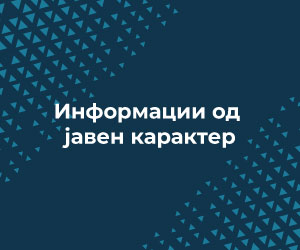Skopje, 27th December 2013 (MIA) – Reconstructed Blace border crossing will provide for increased flow of passengers and goods and efficiency in the operations of the border-crossing authorities. The reconstruction, the completion of which was supported with financial assistance from the World Bank in the amount of EUR 1.8 million, encompassed increase in the number of lanes – four entry lanes instead of the previous two and three exit lanes instead of the previous two.
The border crossing was put to use today by Deputy Prime Minister and Minister of Finance, Zoran Stavreski, Minister of Internal Affairs, Gordana Jankulovska, Customs Administration Director, Vanco Kargov, and Director of the World Bank Office in Macedonia, Tatiana Proskoruiakova.
Reconstruction of Blace border crossing, according to Stavreski, is a strong signal of the good neighborhood relations between Macedonia and Kosovo, as well as of improving the conditions for the citizens and the business community in both countries.
– The first impression one gets of a country at the entry, at the border crossing. It has been important to improve the conditions, to build better facilities for the citizens to complete the procedures, for the businessmen to undergo customs clearance for the goods they are transporting, as well as for the customs officers and border police officers who work day and night and put their maximum efforts in properly performing their functions, Stavreski said.
As for Minister Jankulovska, border crossing reconstruction means more efficient and more successful operations from the point of view of both performing the regular and legal tasks and duties and improving the quality of the cross-border economic and other flow.
– It is important for the Ministry of Internal Affairs and the Border Police that the modernized border crossing will have strong effects on increasing the control quality during everyday cross-border flow and is in the interest of the citizens of the Republic of Macedonia and Kosovo, as well as other countries that use or will use it, Jankulovska underlined.
As she said, peak border crossing times will be a thing of the past, and the reconstructed border crossing will also provide for alleviating the pressure on the other border crossings along this part of the border.
Customs Administration Director said that, in addition to the conditions created for faster flow of passengers and vehicles, the reconstructed border crossing also includes specially equipped premises for the Border Police, the Customs Administration and the inspection authorities, as well as for banks, saving houses and insurance companies.
– We have paid attention to the eco aspects as well. There is a new water treatment station especially for the needs of this border crossing, Kargov pointed out.
As for Director of the World Bank Office in Macedonia, Tatiana Proskoruiakova, the border crossing is of exceptional importance for the communication between Macedonia and Kosovo. – Modernization of this border crossing has provided for faster and cheaper movement of passengers and vehicles. Completion of customs procedures is now more efficient. Citizens used to wait for 10 minutes to cross the border, now they can cross it for only 2.5 minutes. When entering the country, six vehicles per hour in average crossed the border, now 24 vehicles cross the border in one hour, Proskoruiakova said.
In the course of this year, almost two million people crossed this border crossing in both ways. From January to November, goods in the amount of US$ 280 million were exported through Blace border crossing, US$ 277 million out of which were imported to Kosovo. As regards the import in the same period, it amounted to US$ 51 million, US$ 38 million out of which is imported to Kosovo. Trading through this border crossing for 11 months amounted to US$ 330 million, or around 10% of the total trade of the country.













